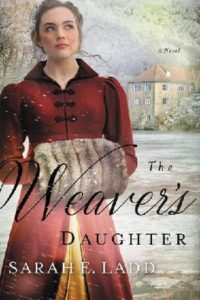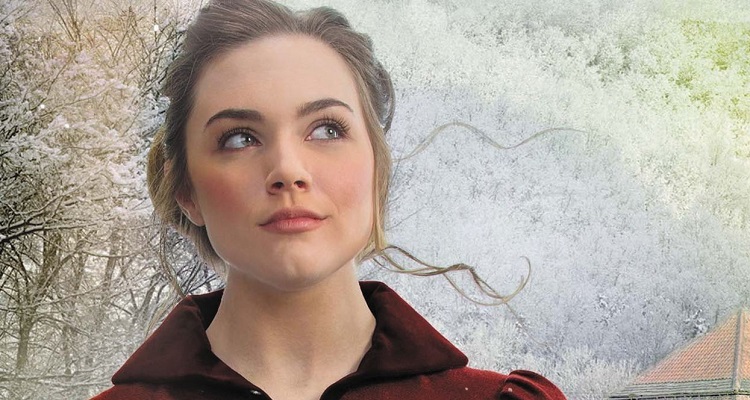Sarah E. Ladd has always loved the Regency period—and a college trip to England and Scotland gave her an idea of what life would’ve looked like in that era. She puts that knowledge to use writing Regency romance novels, including The Weaver’s Daughter (Thomas Nelson): In a landscape torn between tradition and vision, can two souls find the strength to overcome their preconceptions? In this interview, Sarah explains the historical context of her novel, her research into the era, and the value of forgiveness…
What can you tell us about your main characters—and the historical context—in The Weaver’s Daughter?
 The idea for The Weaver’s Daughter came to me while doing research on England’s Luddite Movement, which was a period of time in the early nineteenth century when artisan weavers were protesting new mill machinery that was taking their jobs and changing the way cloth was made.
The idea for The Weaver’s Daughter came to me while doing research on England’s Luddite Movement, which was a period of time in the early nineteenth century when artisan weavers were protesting new mill machinery that was taking their jobs and changing the way cloth was made.
In The Weaver’s Daughter, Kate Dearborne is the daughter of a master weaver, who is a powerful local artisan determined to preserve their livelihood and way of life. Henry Stockton’s family runs the local wool mill, and he and his family are determined to increase efficiency by employing the most modern methods, which puts them in direct opposition of the local weavers.
The tension between these two characters is what drives this story and made it such fun to write.
What does it take to research the period where and when your novel takes place?
My novels take place during England’s Regency period, which is between 1811-1820. To learn about life during this time period I do a great deal of reading! I find most of my research in academic and history books, but I also read books that were published during the Regency era.
The Weaver’s Daughter centers around Yorkshire’s weaving industry, so I did a great deal of research that specific topic, but when writing a historical novel, you must research all aspects of their lives–from social customs to what foods they ate to what their clothing was like. With every book I write I learn new and interesting details, and that keeps the research fresh and fascinating!
Fact vs fiction—what (if any) liberties did you take with the historical facts to make the story work?
 Oh, I am a stickler for research! One reason that I love historical novels so much is because they give us a glimpse into what life was like in the past, and I really want to help transport the reader to that moment in time. That is why I stay very close to the actual research in my stories and convey it as factually as I can.
Oh, I am a stickler for research! One reason that I love historical novels so much is because they give us a glimpse into what life was like in the past, and I really want to help transport the reader to that moment in time. That is why I stay very close to the actual research in my stories and convey it as factually as I can.
What do you hope readers get out of The Weaver’s Daughter?
At the very beginning of the story, Kate’s mother tells her, “We cannot control what others do. We can only control how we react to it. Being angry will only hurt you, not them.”
Ultimately, The Weaver’s Daughter is a story of family loyalty and the peace and freedom found in forgiveness. While I always hope that readers are entertained by the story, I do hope that they will find a little nugget that relates to their own personal journey and enriches them in some way.
How does your faith influence how you approach writing stories?
I’ve heard it said that you cannot separate the creation from the creator. My faith is very important to me, and so it is important to me to incorporate those themes into my stories.
Visit Sarah E. Ladd’s author page:
https://www.familyfiction.com/authors/sarah-e-ladd
The Weaver’s Daughter
Sarah E. Ladd
Thomas Nelson


